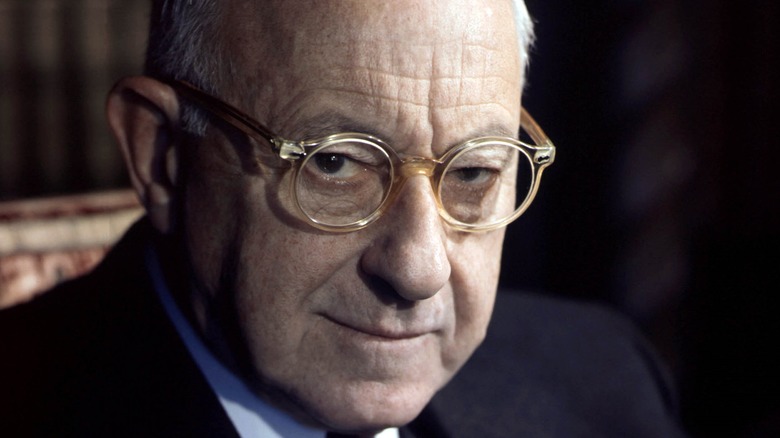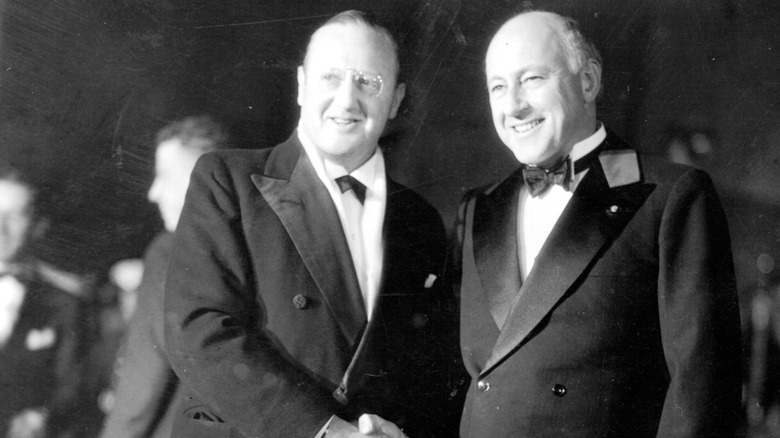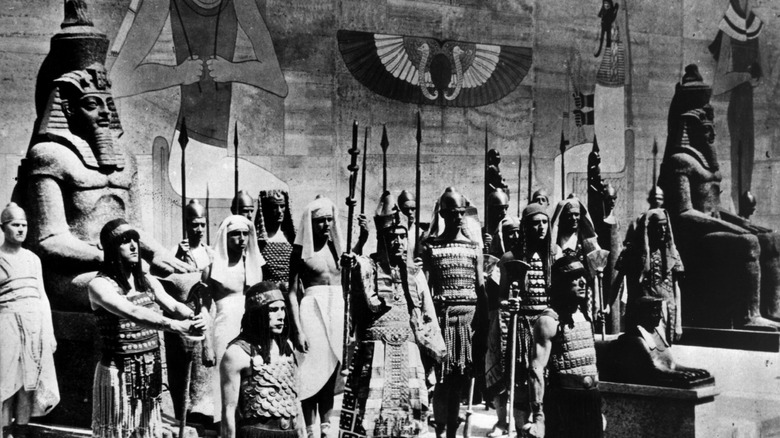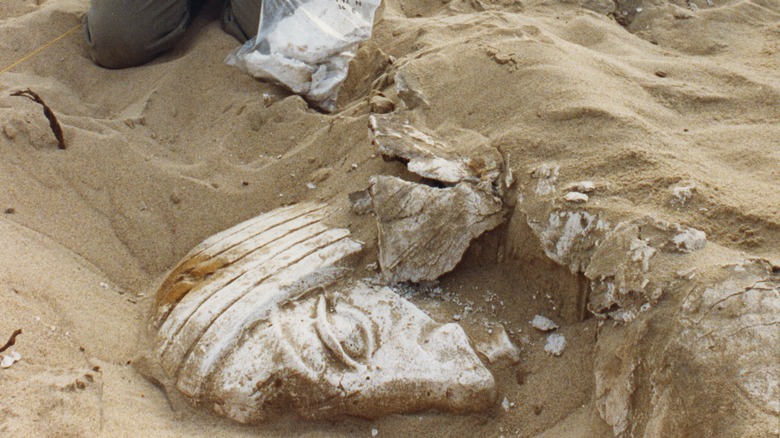Cecil B. DeMille Buried Props After Making A Film Masterpiece
The motion picture industry came to be largely because of the work of actor, producer, and director Cecil B. DeMille. Born August 12, 1881, in Ashfield, Massachusetts, his father was a lay minister and playwright and his mother was a teacher and the second female play broker in the United States (via the Cecil B. DeMille official website). DeMille later attended the Pennsylvania Military College and went on to study acting at the American Academy of Dramatic Arts. He debuted on Broadway in 1900 and in the course of acting in a series of plays, became interested in writing and directing. His first play, "The Genius," went up in 1906.
Success with other plays followed, including a collaboration with producer Jesse L. Lasky with the operetta "California." After a slump that lasted from 1911 until 1913, DeMille considered leaving show business to become a war correspondent. However, Lasky and his brother-in-law Samuel Goldfish (who later changed his last name to Goldwyn) encouraged DeMille to join them in the burgeoning motion picture industry.
Cecil B. DeMille invented the Hollywood epic
In July 1913, according to the Cecil B. DeMille official website, DeMille and Jesse Lasky (shown above together in 1940) joined Samuel Goldwyn and Arthur Friend, an attorney, and formed the Jesse L. Lasky Feature Play Company. In December 1913, DeMille began filming an adaptation of the play "The Squaw Man" in Los Angeles, California. He rented a studio in a converted barn in the suburb of Hollywood after a friend from his acting days recommended the location. A month later, filming was complete and DeMille and Oscar Apfel had directed one of the very first Hollywood movies. It was a massive hit. DeMille went on to make 30 more films between 1914 and 1917. In 1916, the Jesse L. Lasky Feature Play Company merged with the Paramount Pictures Corporation, which allowed DeMille to start making the epics for which he became well-known.
DeMille's first epic, 1916's "Joan The Woman," was so extravagant and expensive to produce that it didn't make any profit. He refined his techniques and in 1919 made the first Hollywood film to gross $1 million, "Male and Female." By 1921 he was considered Hollywood's most powerful producer-director, and two years later, he began work on his biggest production yet, "The Ten Commandments."
The Ten Commandments and its aftermath
"The Ten Commandments" was the first in a series of Biblical epics produced and directed by Cecil B. DeMille, per Britannica. The plot involved two story lines, one of the Exodus, in which Moses led the enslaved people of Israel out of Egypt and freed them, and a modern story in which two brothers argue over their differing religious beliefs. Despite its massive success, it went well over budget. It ended up being DeMille's last silent film for Paramount. He went on to form his own company, Cecil B. DeMille Pictures, and made four more silent films, including "The King of Kings," about the life of Jesus Christ, and "The Godless Girl," which explored harsh conditions in reform schools while telling the story of a high school in which atheism becomes a trend among students.
DeMille joined Metro-Goldwyn-Mayer in 1928 and eventually went back to Paramount in 1932, where he made yet another successful religion-focused epic, "The Sign of the Cross." He remained for the rest of his career. His final film was a remake of "The Ten Commandments," which came out in 1956 and is still remembered for its grand scale, dramatic performances of the cast, including stars Charlton Heston as Moses and Yul Brenner as Ramses, and wild special effects, such as the parting of the Red Sea and the people of Israel walking out of Egypt.
An entire set buried in the desert
In the 1980s, as reported by Entertainment Weekly, director Peter Brosnan and a film crew went to the Guadalupe-Nipomo Dunes, which are about 175 miles from Los Angeles, to look for the site where Cecile De Mille was said to have buried hundreds of props and set decorations from his 1923 production of "The Ten Commandments." There have been several archaeological digs in the spot over the years, and in 2017, the most significant remnant yet turned up. Archaeologists excavated a perfectly preserved Sphinx head that weighed 300 pounds. Per Doug Jenzen, the executive director of the Dunes Center in Guadalupe, California, "The majority of it is preserved by sand with the original paint still intact. This is significant and shows that we're still learning unexpected facets to film historical movie production such as the fact that objects in black and white films were actually painted extremely intense colors."
Past discoveries within the site include another sphinx, which per Live Science was discovered in 2014. It stood 12 stories tall, was 720 feet wide, and was one of a total of 21 sphinx statues that lined the path to the Pharaoh's City in the film. Other less dramatic finds have included liquor bottles, makeup, and tobacco tins. Why did DeMille bury portions of his set in the desert in the first place? According to Entertainment Weekly, it's thought by some people that they were too expensive to move and DeMille didn't want any of his competitors to have access to them. Many of the artifacts are on display in The Lost City of DeMille exhibit at the Dunes Center.



